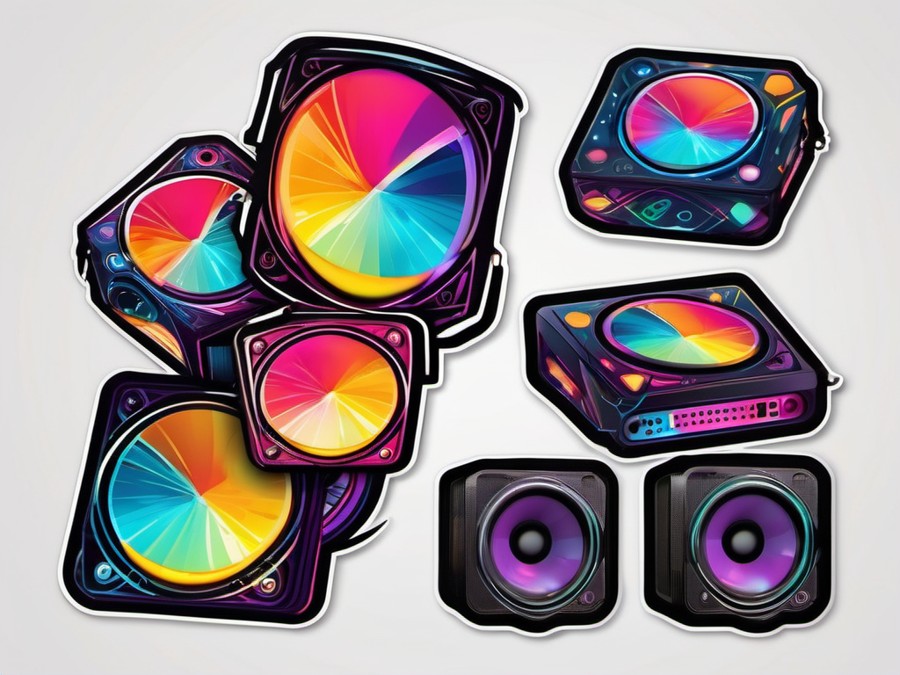· Charlotte Will · Floorstanding Speakers · 6 min read
What is a Bookshelf Speaker Compared to Floorstanding Speakers?
Compare bookshelf and floorstanding speakers, including design characteristics, sound performance, placement tips, room size considerations, and value for money. Discover when to choose each type for optimal audio experience in your home or home theatre setup.

Ever wondered how your choice of speakers impacts the sound quality in your living room or home theatre? Dive into the world of audio setups as we explore the differences between bookshelf speakers and floorstanding speakers. Whether you’re an audiophile or a casual listener, understanding these differences can help you create the perfect soundscape for your needs.
Understanding Bookshelf Speakers
Definition and Purpose
What is a bookshelf speaker? Essentially, it’s a compact speaker designed to fit on shelves, desks, or other small spaces. The name ‘bookshelf’ originates from their common placement above bookshelves, making them a popular choice for smaller living spaces.
Design Characteristics
Bookshelf speakers are typically smaller and more compact than floorstanding speakers. They often come in pairs and feature various driver configurations, usually a tweeter for high frequencies and a woofer for mid-bass.
Common Materials Used:
- Wood: Provides a natural sound and is aesthetically pleasing.
- Plastic: Lightweight and durable, often used in budget models.
- Metal: Offers a sleek look and can enhance bass response.
Driver Configurations:
- 2-Way: Feature a tweeter and woofer.
- 3-Way: Add a midrange driver to the mix, providing more defined frequency distribution.
Sound Performance
Frequency Response and Bass Output:
Bookshelf speakers are known for their clear midrange and treble, but they may lack the deep bass that floorstanding speakers offer. However, some models incorporate passive radiator technology to enhance bass performance without sacrificing size.
Midrange and Treble Clarity:
The smaller cabinet size of bookshelf speakers often results in more precise and detailed midrange and treble reproduction, making them ideal for vocal-heavy music or movie dialogue.
Exploring Floorstanding Speakers
Definition and Purpose
What is a floorstanding speaker? These speakers, also known as tower speakers, are designed to stand on the floor and provide a more substantial presence in your audio setup.
Design Characteristics
Floorstanding speakers are generally larger and taller than bookshelf speakers. Their size allows for more drivers, better bass response, and a wider soundstage.
Common Driver Configurations:
- 3-Way: Very common in floorstanding speakers, providing rich and detailed sound.
- 4-Way: Offers even more defined frequency distribution, ideal for high-end audio setups.
Sound Performance
Frequency Response and Bass Output:
Floorstanding speakers excel in deep bass reproduction due to their larger cabinets and additional drivers. This makes them an excellent choice for action movies or bass-heavy music genres like hip-hop or electronic.
Soundstage and Imaging:
The larger size of floorstanding speakers allows for a broader and deeper soundstage, creating an immersive audio experience. This is particularly beneficial for home theatres where you want to feel like part of the action.
Sound Quality Comparison
Frequency Response
When it comes to bass output and low-end response, floorstanding speakers generally have the edge. However, some bookshelf speakers with advanced technologies can punch above their weight.
Midrange and Treble
For midrange and treble clarity, bookshelf speakers often shine. Their smaller design allows for more precise driver placement and tuning, resulting in crisper high frequencies and more detailed midrange.
Soundstage and Imaging
Floorstanding speakers typically offer a wider and deeper soundstage due to their size and driver configuration. This is crucial for creating an immersive experience in a home theatre setup.
Placement and Setup Considerations
Bookshelf Speaker Placement Tips
To get the best out of your bookshelf speakers, consider these tips:
- Position: Place them at ear level when seated. This ensures the best stereo imaging and soundstage.
- Toe-In: Angle them slightly towards the listening position for better focus and imaging.
- Distance from Wall: Keep a few inches of space between the speaker and the wall to prevent bass boominess.
For more detailed placement advice, check out this article.
Floorstanding Speaker Placement Tips
Floorstanding speakers should be placed:
- Away from Walls: To prevent bass boominess and to ensure better dispersion.
- At Ear Level: When sitting, the tweeter should be ideally at ear level for the best sound quality.
- Toe-In: Similar to bookshelf speakers, angle them slightly towards the listening position.
Room Size and Environment
Bookshelf Speakers in Smaller Rooms
Bookshelf speakers are ideal for smaller rooms where space is limited. Their compact size allows them to fit in tighter spaces without dominating the room. For optimal performance, ensure there is some space around them to prevent bass issues.
For more on the ideal size for floorstanding speakers in small apartments, read this article.
Floorstanding Speakers in Larger Spaces
Floorstanding speakers excel in larger spaces where they can take advantage of the room’s size to produce a more expansive soundstage. Their deeper bass response also benefits from the extra room volume, providing a more immersive experience.
Value for Money: Which Speaker Type Offers Better ROI?
Price Comparison
Bookshelf speakers are generally more affordable than floorstanding speakers due to their smaller size and fewer drivers. However, high-end bookshelf speakers can rival the price of mid-range floorstanding models.
Performance per Pound
For sheer sound quality and value, bookshelf speakers offer excellent performance per pound. They are capable of delivering high-quality audio in a compact package, making them a great investment for many setups.
When considering active versus passive floorstanding speakers, read this article.
Use Cases: When to Choose Each Type
Bookshelf Speakers for Home Audio
Bookshelf speakers are perfect for everyday home audio. Their versatility makes them suitable for music, movies, and casual listening. They fit seamlessly into various room layouts without compromising on sound quality.
Floorstanding Speakers for Home Theatre
For a true home theatre experience, floorstanding speakers are often the better choice. Their ability to produce deep bass and create a wide soundstage enhances the immersive feel of movies and action sequences.
For finding the best floorstanding speaker for your home theatre, read this article.
Conclusion
Choosing between bookshelf and floorstanding speakers depends on your specific needs, room size, and budget. Bookshelf speakers offer versatility and excellent sound quality in a compact package, making them ideal for smaller spaces. Floorstanding speakers provide deeper bass and a wider soundstage, perfect for larger rooms and home theatre setups.
Regardless of your choice, both types of speakers can significantly enhance your audio experience when paired with the right source and setup.
FAQs
What is wireless connectivity in bookshelf speakers and how does it benefit users?
Wireless connectivity allows for easier placement and integration with modern audio systems. Read more about the benefits here.
What is the difference between bookshelf speakers and floor-standing speakers?
Both types have their unique advantages. For a detailed comparison, check out this article.
What is passive radiator technology in bookshelf speakers and how does it work?
Passive radiators enhance bass performance without adding traditional drivers. Learn more here.
What is the significance of frequency response in bookshelf speakers?
Frequency response determines how accurately a speaker can reproduce different frequencies. Understand its importance here.
What is the difference between a center-channel speaker and other speakers?
Center-channel speakers are designed to deliver clear dialogue and special effects. Learn more about their role here.




